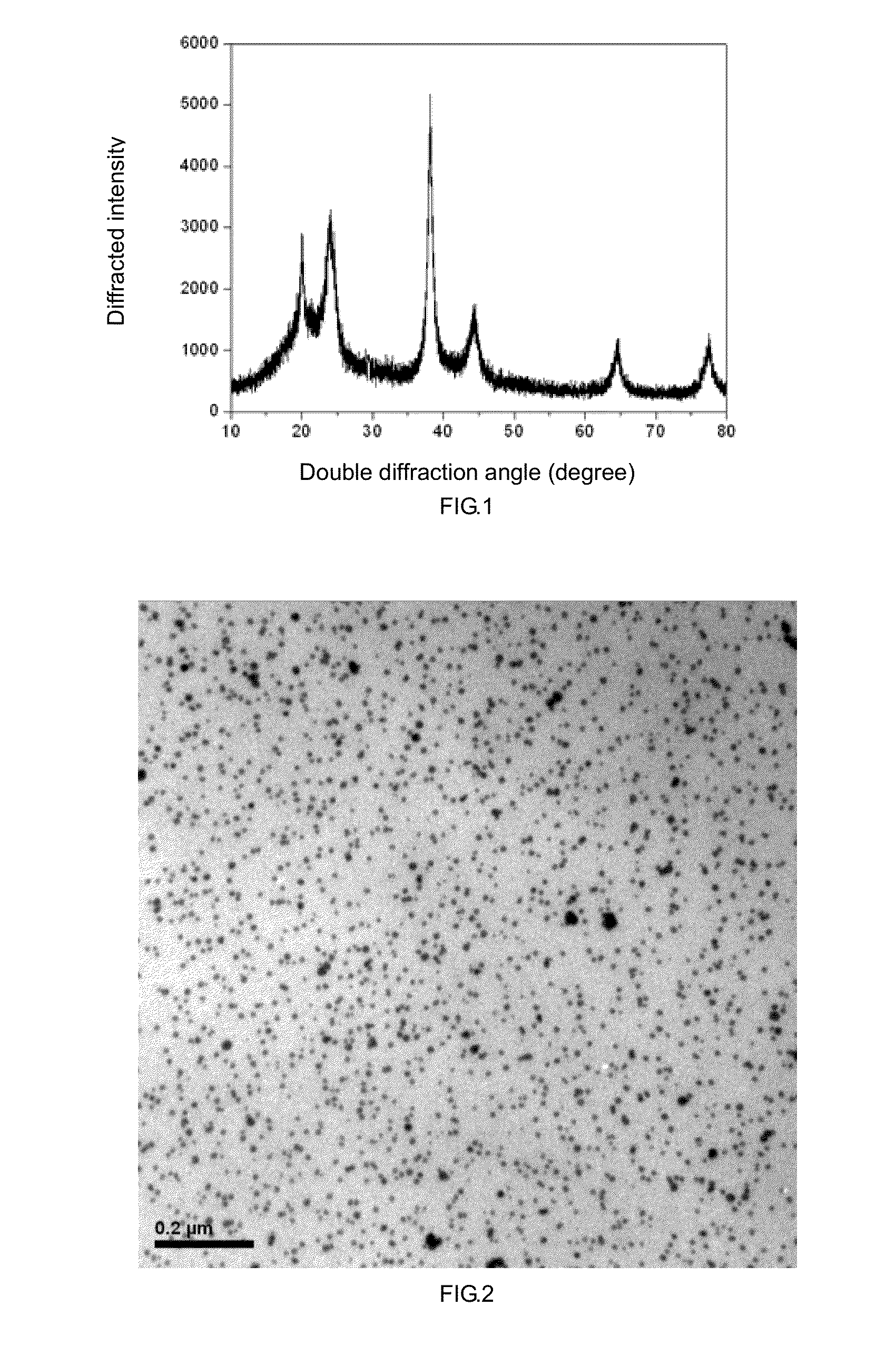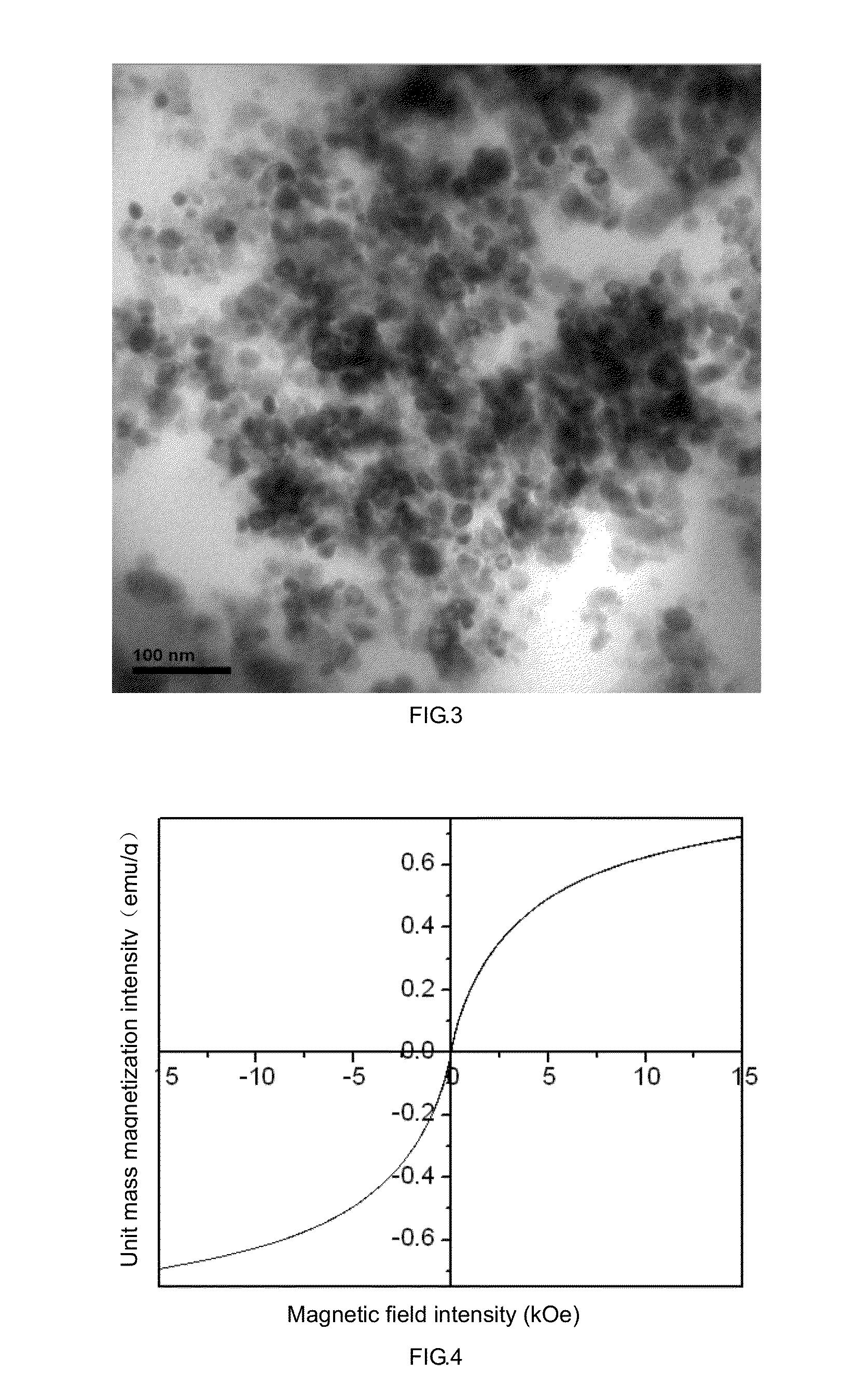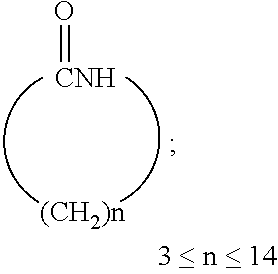NANO particle/polyamide composite material, preparation method therefor, and use thereof
a technology of nano-polyamide and composite materials, which is applied in the field of polymer composite materials, can solve the problems of poor processability, high cost, and high preparation conditions of nano-polyamide materials, and achieves low cost of raw materials used in the synthesis method, good mechanical performance, and easy processing and molding.
- Summary
- Abstract
- Description
- Claims
- Application Information
AI Technical Summary
Benefits of technology
Problems solved by technology
Method used
Image
Examples
embodiment 1
Preparation of a Nano Mg(OH)2 / Nylon 6 Composite Material
[0108]1. Use of the Precipitation Method for Preparing a Nano Mg(OH)2 / Caprolactam Mixture
[0109]1000 g MgCl2.6H2O and 1000 g caprolactam having a purity not less than 60% and a moisture not more than 20% are added into a reactor, and then stirred for 30 min at 100° C., so that magnesium chloride is fully dissolved in a molten caprolactam mixture. 400 g NaOH is rapidly added under stirring, and then the temperature is constantly maintained at 100° C. for 2 h to obtain nano Mg(OH)2 / caprolactam mixture.
[0110]2. Polymerization of the Nano Mg(OH)2 / Caprolactam Mixture
[0111](1) The nano Mg(OH)2 / caprolactam mixture prepared in the previous step is added with 50 g deionized water, 1 g aminocaproic acid and 0.08 g molecular weight regulator, i.e. caproic acid, followed by uniform mixing under mechanical stirring at 80° C.
[0112](2) A reactor is sealed and heated up to 240° C.; the vapor generation pressure is constantly maintained at 2.0 M...
embodiment 2
Preparation of a Nano Mg(OH)2 / Nylon 6 Composite Material
[0116]1. Use of the Precipitation Method for Preparing a Nano Mg(OH)2 / Caprolactam Mixture
[0117]1000 g MgCl2.6H2O and 1000 g caprolactam having a purity not less than 60% and a moisture not more than 20% are added to a reactor, and then stirred for 30 min at the temperature of 80° C., so that magnesium chloride is fully dissolved in a molten caprolactam mixture. 400 g NaOH is rapidly added under stirring, and then the temperature is constantly maintained at 100° C. for 2 h to obtain nano Mg(OH)2 / caprolactam mixture.
[0118]2. Polymerization of the Nano Mg(OH)2 / Caprolactam Mixture
[0119](1) The nano Mg(OH)2 / caprolactam mixture prepared in the previous step is added with 5 g deionized water, 10 g aminocaproic acid and 0.08 g molecular weight regulator, i.e. caproic acid, followed by uniform mixing under mechanical stirring at the temperature of 80° C.
[0120](2) A reactor is sealed and heated up to 240° C., the vapor generation pressur...
embodiment 3
Preparation of a Nano Nd(OH)3 / Nylon 6 Composite Material
[0124]1. Use of the Precipitation Method for Preparing a Nano Nd(OH)3 / Caprolactam Mixture
[0125]10.9 g Nd(NO3)3.6H2O and 100 g caprolactam having a purity not less than 60% and a moisture not more than 20% are added to a reactor, and then stirred for 30 min at the temperature of 150° C., so that Nd(NO3)3.6H2O is fully dissolved in a molten caprolactam mixture. 3 g NaOH is rapidly added under stirring for the purpose of reaction at 200° C. for 24 h to obtain nano Nd(OH)3 / caprolactam mixture.
[0126]2. Anionic Ring Opening Polymerization of the Nano Nd(OH)3 / Caprolactam Mixture
[0127]The nano Nd(OH)3 / caprolactam mixture prepared in the previous step is water-removed by evacuation for 30 min at the temperature of 150° C., 1 g NaOH is added to continue evacuation for 30 min at the temperature of 150° C., 0.5 g toluene-2,4-diisocyanate (TDI) is added after the temperature is lowered to 120° C., rapid and uniform mixing is performed withi...
PUM
| Property | Measurement | Unit |
|---|---|---|
| temperature | aaaaa | aaaaa |
| temperature | aaaaa | aaaaa |
| temperature | aaaaa | aaaaa |
Abstract
Description
Claims
Application Information
 Login to View More
Login to View More - R&D
- Intellectual Property
- Life Sciences
- Materials
- Tech Scout
- Unparalleled Data Quality
- Higher Quality Content
- 60% Fewer Hallucinations
Browse by: Latest US Patents, China's latest patents, Technical Efficacy Thesaurus, Application Domain, Technology Topic, Popular Technical Reports.
© 2025 PatSnap. All rights reserved.Legal|Privacy policy|Modern Slavery Act Transparency Statement|Sitemap|About US| Contact US: help@patsnap.com



